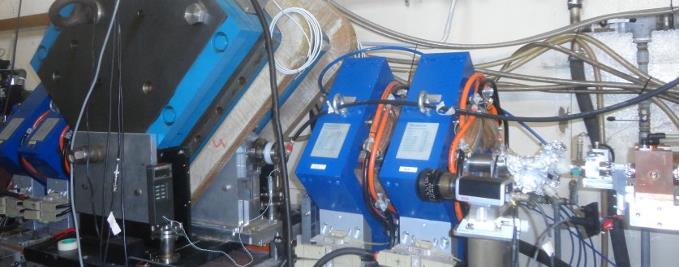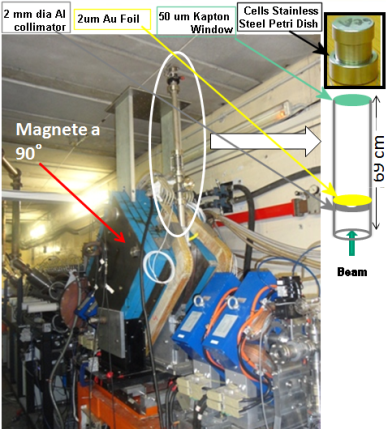
|
Four quadrupoles Q1, Q2, Q3 and Q4 are used to match the beam ellipses in the PMQ preceeding the SCDTL-1 structure for optimal transmission of particles. In the same line 2 dipole correctors allow to center the beam to SCTDL input bore hole. Injector’s operating RF is 425 MHz and is not a subharmonic of the SCDTL’s operating radiofrequency. The injector output beam is let expanding in phase because of its energy spread and the long drift to reach SCDTL structures (about 2 meters). The beam bunch ends to cover fully three RF periods of the 3 GHz RF, and therefore the 425 MHz bunch-to–bunch current variation is negligible. The resulted transmission is about 10%, but this is not an issue since a few uA average 7 MeV beam, even if completely lost, does not produce substantial stray radiation, both neutrons and gamma from activation. A better overall transmission figure will be got when correctly operating the source in pulsed mode.
|

|
TOP IMPLART - SUBSYSTEMS - LEBT- VERTICAL MAGNET |
|
Accelerators Home |
|
TOP IMPLART Home |
|
Status and Schedules |
|
TOP IMPLART SUBSYSTEMS |
|
FSN - TECFIS - APAM Particle Accelerators and Medical Applications Laboratory |

|
In figure below the transverse envelopes are shown, in the case of matching the transverse beam parameters to an array of four PMQs. Beam shows very similar behaviour when the matching is done for SCDTL-1 operation Very careful beam based alignment has been performed to maximize the SCDTL-1 transmission. Beam current is monitored by a small current transformer placed between Q4 and the PMQ before SCDTL-1. |

|
After Q1 nd Q2 a 6.7 kGauss vertical magnet with parallel edges is inserted. The beam orbit, inside the magnet is a 90°arc with 480 mm radius of curvature. Magnet gap is 48 mm. The current required for 3 MeV energy is 180 A, and for 6.8 MeV energy is 190 A After 20 cm drift the beam is collimated by a 2 mm hole, and immediately after a 2 micron Au foil scatters the residual beam, that, 50 cm after, spreads almost uniformally onto a collimated area of 13 mm diameter, where a 50 um Kapton foil is the vacuum interface. |